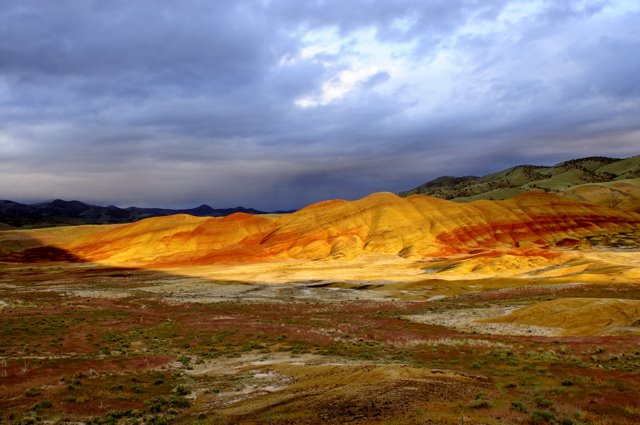HDR or HDRI photoraphy has been around for awhile now but not all of us really know what it is. "HDRI" or "High Definition Resolution Imagry" is simply using specially designed software to combine several images of the same subject into a single image. The effects can be very pleasing. The process can be simple or very detailed and complicated, depending on your individual taste and abilty. Read on to find out how you can do this with any camera for free.
The images used for HDR photography are usually created with your camera by shooting (bracketing) multiple images of the same scene at different exposure levels. This is a good reason for having the best tripod you can afford since the camera should not move during the shooting process.
Some cameras have built in programs that allow what is called "Bracketing." Photographers have been bracketing their photos for many years because it is not uncommon to find yourself shooting in very difficult lighting situations. Photographers will set their cameras to shoot at the meter reading, then shoot additional shots at exposures both above and below the camera's suggested exposure level to help them get the right exposure. Each shot is adjusted by anywhere from .3 to .5 to .7 to 1 full stop and out to a total of at least two full stops above and below the average meter reading. My little kodak point and shoot has the possibilty of shooting 13 different exposures by simply changing it's exposure setting before each shot. My Nikon D300 can do many more and it can be set to do it automatically. The Kodak must be set manually before each shot. The point is that we can bracket our photos with just about any camera so long as we can adjust the exposure settings for each shot. When combining all these photos for a single HDR image, the more exposures you have the better.
After creating your bracketed images for combining into HDR photos, you need to have the proper software. Both commercial and free versions are available. Photoshop, HDRshop, and Photomatic, are a few of the more popular commercial versions. Photonaut, and Luminance are a couple of free versions and are excellent places to get started.
Luminance is probably the easiest version to get started with and a simple internet search will help you find it. I found it by searching for "free hdr software" and checking out all the google suggestions and blog posts about this kind of software. There are tutorials available all over the internet and in You Tube to help you too. So good luck and happy shooting.
Please send comments if this article was helpful to you or if you would like information about other topics.
I have created a great little book store called "How To Use Your Camera" where you can buy photography books online. Just click the link to see what is available.
If you need a camera get it here at my camer store at "Photo To Go"
You can also visit my own photography website at Dwains Picks to see some of my work.
Thanks for visiting and I hope you will check this site often.
